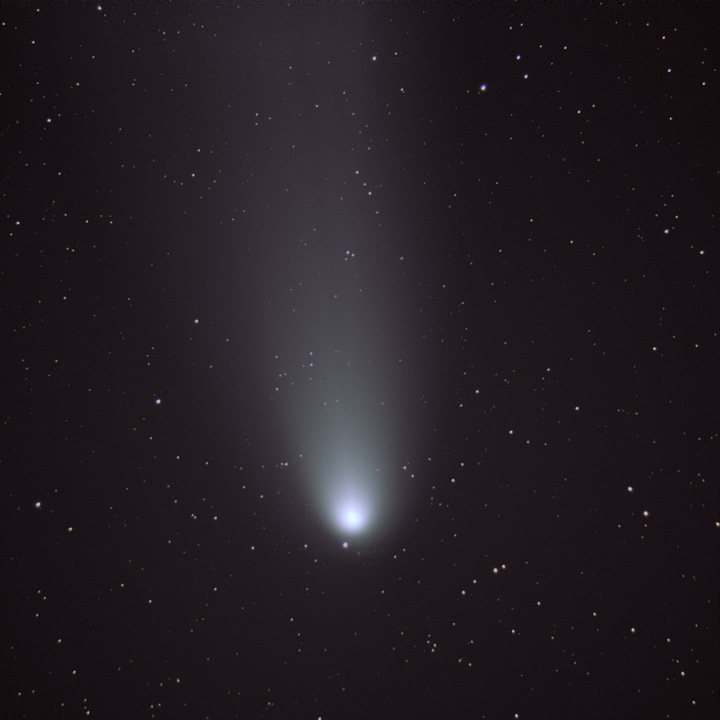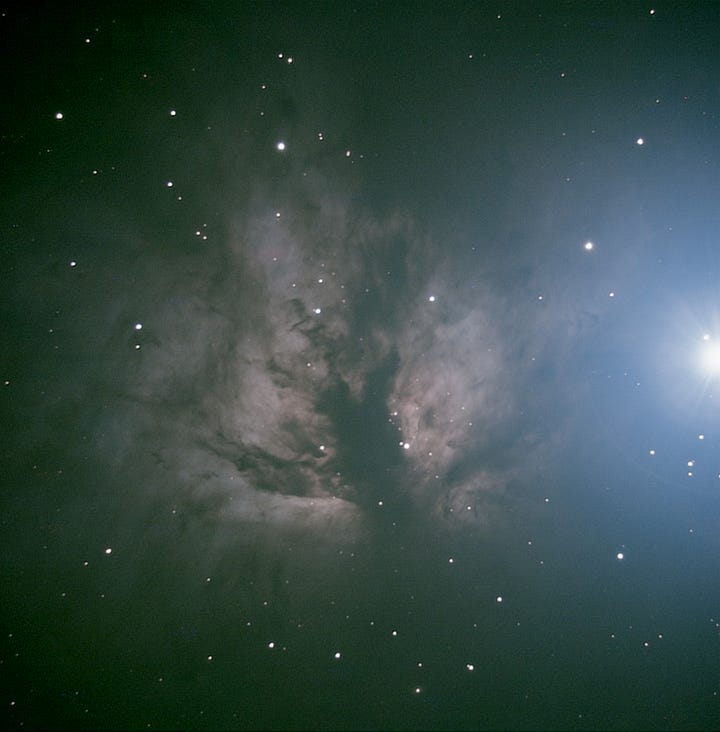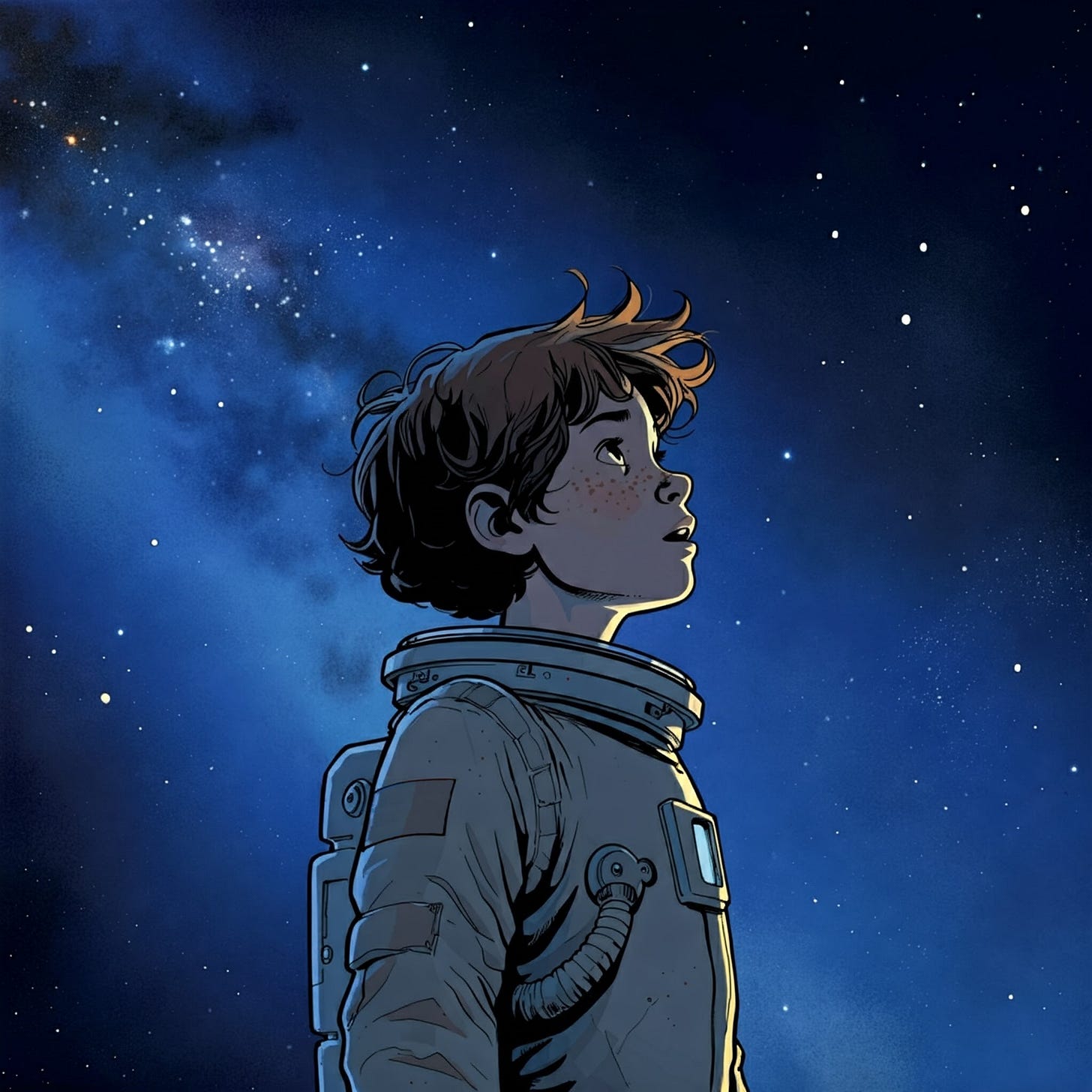This is What I’m Looking At
Explore a sky full of stories, amazing science and fun with smart telescopes. Welcome!
Are you fascinated by the Universe too? Then this is a newsletter for you. You might already have a telescope, or are maybe thinking about getting one. You’d like to learn how to experience more with it, but don’t necessarily want to trek too deep into the technical weeds. I’ll show you how I use mine to do what I’ve come to think of, playfully, as ‘Adventure Astronomy!,’ exploring a sky full of stories and science, and discovering how these things relate to us here on Earth. My preferred tools are digital telescopes – the new ‘smart’ telescopes as well as camera-equipped traditional ones – because I’ve found that they just enable so much more. Will you join me on this adventure? Subscribe to begin exploring tonight!
In my own journey as a (very) amateur astronomer, I’ve found a wealth of available tools and information – often too much information, much of it dense and technical. The latest apps and websites offer many great features. But when faced with that age-old question, “what to look at tonight?” their answer tends to be puzzling: usually a long, long, unprioritized list of astronomical objects.
When it comes to exactly how to look at these things, I’ve always loved the immediacy, direct connection to the sky, and sense of discovery possible with visual astronomy – just an eye, an eyepiece, some mirrors, and a burst of ancient photons. But usually found myself wanting to see more, much more than you can through even the larger amateur visual telescopes.
At the same time, I’ve also sampled some of the delights of astrophotography: capturing a wondrous patch of heaven in an image all my own, then enhancing it to tease out even more of the fascinating detail. Sooo much more than I ever would have imagined possible. But have never so far felt inclined to invest the ever-larger amounts of time and money required to achieve truly refined astro-images (big props to those who do, I adore your pictures, thank you for them!)
Instead, where I continually find myself drawn to is somewhere in the middle.
I like to explore the sky like a visual astronomer, to move fast – but also to discover new things in as much detail as I can, which for me requires the power of a digital camera (it comes down to one word: time; a human eye can only capture light for a brief instant, a smart telescope can do it for hours).
I also want to experience as wide a variety of phenomena as possible. To unearth the most interesting stories in the sky. To find out why something apparently mundane might actually be sublime. To identify the threads between what I’m seeing and the latest science – and maybe even to science some myself, along the way. To learn how a particular galaxy, nebula, or even just plain old star, seemingly so distant, actually connects with my life and yours.




So, even though there doesn’t seem to be an established, handy label for it, that’s exactly what I’ve done. And in the process, I realized there aren’t many information sources out there that approach astronomy in quite the way I enjoy most, without getting bogged down in overwhelming technical detail, and with a focus on engaging stories. If I wanted something like that, I’d have to make it myself, and that’s how What I’m Looking At came to be!
First principles
What I’m Looking At focuses on amateur astronomy enabled by smart telescopes and digital-camera-equipped traditional telescopes.
Incredible pictures are always a joy but what really gets me going is a fascinating story.
Amateur astronomy used to be a highly technical pursuit (you even had to grind your own mirrors! Of course you still can, if that sounds fun to you; there are many lifetime-deep rabbit holes in this hobby, for the more technically-minded). But these days, thanks to the power of technology, it doesn’t always have to be that way. As much as humanly possible, I aim to flatten learning curves and boil the essential core out of arcane knowledge and tools.
Finally, it doesn’t either have to be expensive to explore the night sky (and even the day sky) for astronomical wonders. These days, you can actually see and learn amazing things for amazingly little. You don’t have to be rich to join this adventure!
About the author
My name is Patrick Gardner and I’m a very amateur astronomer. Definitely no expert on this subject, just another dude with a telescope, a healthy dose of curiosity, and an urge to explore the Cosmos and share what I find. I’ve enjoyed a long professional career in advertising, with a focus on digital media, and have also always had a soft spot for adventure. In 2015-16, I sailed my own 46’ ketch Azimuth, with family, across the Atlantic Ocean, and have hiked 1200+ miles (and counting!) on the Pacific Crest Trail.
Have a favorite astronomical or personal story of your own, a personality or a target to share? I’d love to hear from you. Mail me today at patrick@whatimlookingat.com.


